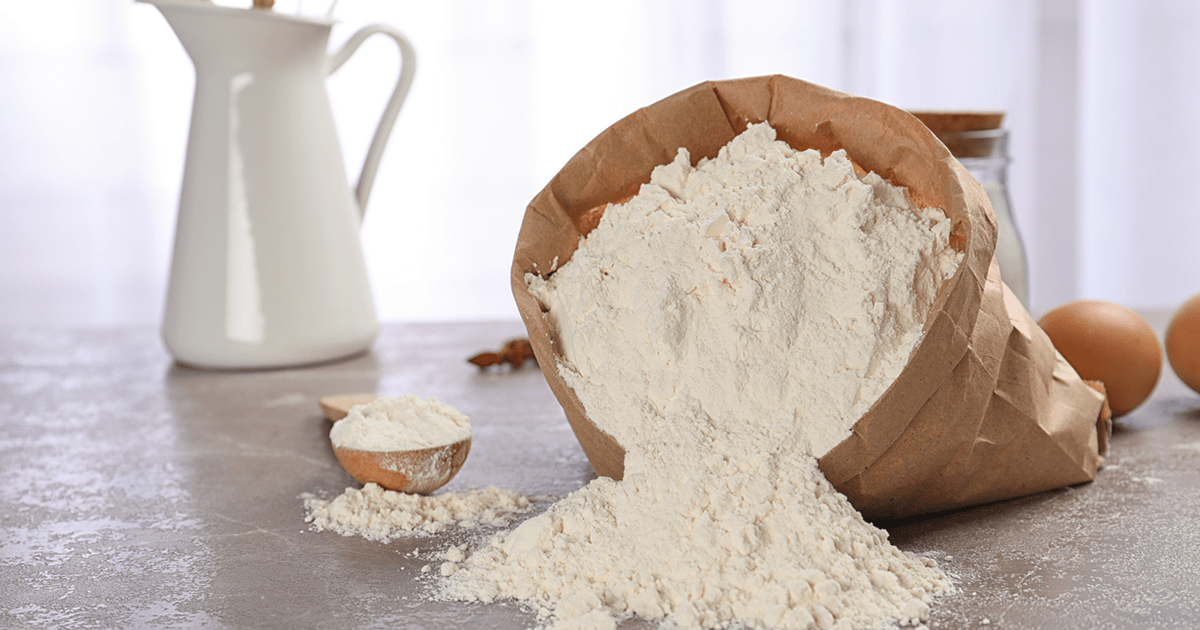Flour

The packaged wheat flour market in India is growing at a whopping CAGR of almost 21%. Rs 20,000 Cr by the end of the current fiscal (2020-21) itself. However, still packaged wheat flour remained an urban phenomenon with the urban market occupying more than 90% of the total market.
Whole Wheat Flour
Whole wheat flour is denser. Made from the endosperm, germ, and fiber-rich bran. The germ makes products more dense with less rise. You’ll also have to let this flour rest before baking–ten minutes should be the minimum, 20-30 is ideal. Resting allows the liquid in the batter or dough to permeate the bran and the germ, softening it before baking, which will result in a less coarse final product.
White Whole Wheat Flour
This flour shouldn’t be confused with bleached flour. Instead, it’s made from a whole wheat seed head, containing bran, germ, and endosperm, only it’s made from a lighter variety of white hard winter wheat. The result is a lighter color baked good and a slightly sweeter taste compared to whole wheat.
Pastry Flour
Comes in a regular variety, as well as whole wheat. Often bleached, it utilizes softer wheat varieties, resulting in a finer texture and diminished protein content. It shouldn’t be used for bread because if its lower gluten profile.
Cake Flour
Is ideal for–you guessed it!–cake baking, creating a spongy, airy texture in the final product. It’s milled extremely fine, usually bleached and has a low protein content. The bleach allows the starches in the flour to absorb more fat and liquid.
Bread Flour
This high protein flour is perfect for developing a strong gluten network when you’re creating chewy texture products.
Self-Rising Flour
When you’re looking for a shortcut, self-rising flour already has a leavening agent (baking powder) and salt built right in. The flour base is closer to a cake flour with lower protein. It cannot be substituted for other flours. To make your own self-rising flour combine 1 cup of flour with 1 1/2 teaspoons baking powder and 1/2 teaspoon of salt.
Vital Wheat Gluten Flour
Is somewhat of a “superflour”–which is not a scientific term, just my way of saying that it’s a flour engineered with little starch and a lot of gluten. Technically, it isn’t flour but is made from wheat flour that has been hydrated. This combination activates the gluten, and then the flour is processed to remove everything but the gluten. After that, it’s dried and ground back into a powder.
Gluten-Free Flour
Gluten-free flour alternatives have grown in popularity as consumers either have dietary restrictions, allergies, celiac disease, or are looking to reduce gluten consumption. These flours attempt to mimic the functionality and texture of wheat flour. They may contain rice, corn, potato, tapioca, arrowroot, buckwheat, amaranth, bean, quinoa, sorghum, flax meal or ground nuts, typically as a blend.
Products. Bread, pasta, crackers, many cakes, and many other foods are made using flour. Wheat flour is also used to make a roux as a base for thickening gravy and sauces. It can also be used as an ingredient in papier-mache glue.
